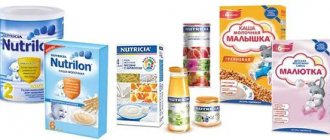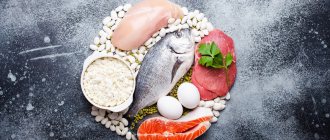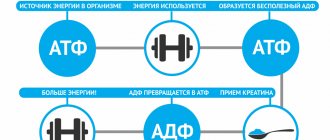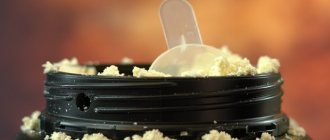Any old-school athlete will confirm that milk powder was an indispensable product for gaining muscle mass. Without it, the rate of progression was significantly lower and one could not count on maintaining large muscle volumes and high strength indicators. But time passes, the sports nutrition industry is changing and completely different mixtures have begun to be used for muscle growth. The main question is how relevant is powdered milk in bodybuilding and does it make sense to go back to basics to get more efficiency from supplements or save money?
Does milk powder help you gain muscle mass?
Powdered milk cannot directly affect muscle growth. That is, this product does not have an effect that would increase volumes. This is the first myth that dates back to the era when powdered milk was still relevant. All that is needed for muscle mass is the supply of amino acids and in this regard, milk powder is one of the sources of protein.
Assuming you are training, in a caloric surplus, and have sufficient recovery, the relevance of protein supplementation depends on your diet. Athletes at amateur (beginner and advanced) levels can easily meet their full daily requirement of protein from regular food. But for professional-level athletes, simple food will not be enough, so they cannot do without the use of supplements. As a rule, powdered milk ceased to be widely consumed even before the beginning of the 2000s; today, with the abundance of better and more effective products in the sports nutrition industry, milk powder looks like an archaic and relic of the past.
How to take milk powder for athletes
The method of using this product depends on what goals the athlete is pursuing. Most often, an athlete is trying to gain muscle mass and increase strength abilities. In bodybuilding, a portion is considered to be 100 grams of dry powder. To effectively gain muscle mass, an athlete will need 2-3 doses of this product.
To understand how to properly take this milk for a bodybuilder, let’s look at the protein features of this product. This milk formula contains casein and whey proteins in a ratio of 80% and 20%, respectively.
It takes several hours to digest casein, since it is not a complete protein, so, unlike protein, it makes no sense to take it after a workout. Taking it shortly before bed is also not recommended due to its high fat and carbohydrate content. The optimal time to take milk powder is 2-3 hours before strength training in a dosage of 100 grams (1 serving).
Milk powder should be diluted in warm water. The proportion of powder and water should be approximately 8:1, which is approximately 6-7 tablespoons per glass of water. Water should be added gradually, constantly stirring it with the powder.
It is not recommended to dissolve dried milk in cream, as this will increase the fat content of the product.
Difference between milk powder and protein powder
In fact, milk powder is the forerunner of modern additives. It cannot be considered as a replacement for protein, because from the point of view of progress it will be a significant step back. The main difference between milk powder and protein is:
- The amount of fat, lactose and other impurities (protein supplements are almost completely free of them).
- Absorption rates.
- Ease of use, taste.
- Storage conditions have a strong influence on the effectiveness of the additive.
- Amino acid composition.
In general, dried milk supplements are absorbed much more slowly, which is a significant disadvantage. Storage conditions and quality of raw materials also have a significant impact on the efficiency of administration. If the protein is packaged in production and retains its properties unchanged for a long time, then milk powder that was stored at the wrong temperature or humidity will work much worse.
Which one to choose?
There are several dozen manufacturers on the Russian market. Many of them have a low degree of purification from impurities and are not recommended for regular use in food. When purchasing, you should pay attention to 3 points:
- availability of information on its compliance with GOST 4495-87 or GOST R 52791-2007;
- suitable shelf life;
- Convenient vacuum packaging with zip tape to prevent damage during storage.
Powdered milk should have the appearance of a homogeneous, fine, milky powder without any impurities. When added to warm water, it dissolves completely and does not form lumps or sediment.
Composition of milk powder
There are two types of formulas: whole and low-fat. For sporting purposes, the second option was more often used if it was not a deficiency.
Comparative characteristics of whole and skim milk:
| Type | Whole | Low fat |
| Calorie content per 100 g | 549 kcal | 373 kcal |
| Fats | 25 | 1 |
| Squirrels | 25.5 | 36 |
| Lactose | 36.5 | 52 |
It is also worth considering that in powdered milk most of the protein content consists of casein (about 80%).
Sources[edit | edit code]
- p. 262 in “The Book of Ser Marco Polo, Book 1” translated by Sir Henry Yule (3rd edition), Charles Scribner's Sons, New York, 1903
- p 277 in "Condensed Milk and Milk Powder, 3rd edition" authored and published by OF Hunziker, 1920
- p 318 in “Foods: Their Composition and Analysis: A Manual for the Use of Analytical Chemists and Others” by A. W. Blyth, published by C. Griffin, 1896 https://www.archive.org/details/foodstheircompos00blyt
- "Milk Powder" by KN Pearce, Food Science Section, New Zealand Dairy Research Institute. nzic.org.nz
- Milk Powder Nutritional Information, US Dairy Export Council
- USAID Commodities Reference Guide, Non Fat Dry Milk (Jan 2006)
- M. Okamoto and R. Hayashi (1985) “Chemical and Nutritional Changes of Milk Powder Proteins under Various Water Activities” Agric. Biol. Chem., Vol.49(6), pp. 1683-1687.
- p 655 in "Advanced Dairy Chemistry: Volume 2 - Lipids" by P. F. Fox and P. McSweeney, Birkhäuser, 2006
- p 296 in “Toxins in Food” by W. M. Dabrowski and Z. E. Sikorski, CRC Press, 2004,
- RHubbard, RW; Ono, Y; Sanchez, A (1989). "Atherogenic effect of oxidized products of cholesterol." Progress in food & nutrition science 13 (1): 17–44.
- p 296 in “Toxins in Food” by W. M. Dabrowski and Z. E. Sikorski, CRC Press, 2004,
Pros of replacing protein with milk powder
To the question whether it is possible to replace protein with milk powder, the answer is yes. But such a replacement will be devoid of any meaning. Even the issue of saving money is not relevant, since good milk powder is not the cheapest product. And cheap raw mixtures do not even have the properties of ordinary milk powder and are likely to quickly lead to digestive disorders.
Also, such a replacement cannot be considered because of lactose, which essentially refers to fast carbohydrates, that is, an analogue of sugar or other refined foods with a high glycemic index.
Why is it good for gaining weight?
Taking skim milk powder for bodybuilding makes sense because of its composition. 36% protein and 1% fat in 100 g of product allow it to be used both during the period of mass gain and during drying.
An important advantage is the presence of all amino acids, as well as a number of minerals and vitamins.
Skim milk differs from sports nutrition in its low cost, which makes it accessible to a large number of athletes. At the same time, the product is rarely counterfeited due to the low cost of production.
Minuses
The main disadvantages if you use dried milk instead of protein:
- Poor digestion.
- Questionable cost savings.
- Lack of amino acids, which will have a negative consequence for the muscles.
- High content of lactose (fast carbohydrates) and other impurities.
- Increased risks of developing diabetes mellitus and insulin resistance.
- Increasing the level of cholesterol in the blood and provoking the development of atherosclerotic damage to blood vessels and the heart.
Interesting Facts
Before we wrap things up, here are a few facts:
- If the manufacturer did everything correctly, then the calorie content of the two types of milk (dry and liquid) is approximately equal. On average, one glass of “dried” food contains about 300 calories, and whole food – about 400.
- The low-fat powder contains almost no cholesterol, which allows you to dilute and drink it without harm to health (we are talking about people with hypertension, heart disease, and so on).
- This food contains not only protein, but also a large amount of calcium. By the way, it is very useful for strengthening bones. It is simply impossible to overestimate its benefits for an athlete.
- Powerful source of protein. As we mentioned above, the powder contains protein. Of course, there is not as much of it as in sports nutrition, but still.
- It contains many nutrients - vitamin B12, vitamin A, selenium, potassium.
Drawing conclusions
If you choose which powdered milk is better, then the first option looks more preferable. Can it be taken instead of protein? It all depends on the tasks assigned. We see that low-fat dairy foods contain a small amount of carbohydrates. If your goal is to gain overall weight and increase strength, then this alternative will do. But if we are to be completely honest, the powder is more of a replacement for a gainer, and not for a protein.
What else is the downside? Let's remember the dosage of protein for an athlete's body. On average, you need 3-4 grams of protein per kilo of weight. If you weigh 100 kilograms, then to cover the required daily requirement you will need 300-400 grams. Consequently, to satisfy all muscle needs, you need to eat more than a kilogram (!) of “milk powder”. If you consider that the product also contains carbohydrates, then add another half a kilogram of carbohydrates to everything.
It is almost impossible to eat such an amount. Even if you manage to overcome this volume, you risk not only gaining weight, but also acquiring new layers of fat. Protein is more harmless in this regard. There are no carbohydrates in it - only pure protein. In addition, 100 grams of the product contains about 85-95 grams of the required protein. Consequently, the daily dosage to cover the norm is much lower.
There is one more fly in the ointment. Few people know that in the process of converting a product from liquid to powder form, cholesterol is oxidized. In this form, it is very harmful to the body - it forms atherosclerotic plaques, narrows the lumens of blood vessels, and so on. Thus, by abusing the product, you can not only “expose” your cardiovascular system, but also complicate the training process.
Of course, if taken correctly, the replacement we are considering is acceptable, but if you need a real result, then, of course, protein is better.
Flaws
Among the product's disadvantages, the most important for athletes are:
- low percentage of proteins in the total mass (in relation to other sports nutrition);
- increased content of lactose - one of the main allergens;
- high fat content;
- the need for special storage conditions;
- a huge number of various side impurities, relative to the main substances.
Did you know? A modern analogue of powdered concentrates of dairy products was first obtained in 1802 by the Russian scientist and doctor Osip Krichevsky.
Use of milk
To make milk from dry powder, it must be cooked. To do this, dilute the powder with warm water in a ratio of one to three. According to some scientists, it is best to drink milk early in the morning or late in the evening. At other times of the day, this drink can be harmful to digestion. After this, it is not recommended to eat food. You can add a little sugar or honey to the milk, as well as fennel and cardamom - they calm the nervous system.
The product is used in baby food, as well as for the manufacture of bakery products, in the production of confectionery products, and as an additive to sausages and meat products.
In addition, this drink is used in cosmetology to prepare masks and creams. A milk-based mask significantly improves tone and has a tightening effect. For flaky and very dry skin, a mask made from a mixture of honey and flax seeds is perfect. On dry and normal skin, it is useful to apply a mask made from a mixture of honey, egg yolk and milk.
For those on a diet: will it help with weight loss?
Powdered milk will help those losing weight maintain normal health, but you should not abuse it. The product is quite high in calories. Whole milk powder contains 476 calories. Low fat - 339 calories. In terms of tablespoons, it turns out that this is the energy value of five spoons of the product or two glasses of the resulting drink.
What are the benefits of plant milk? Reviews from experts report the following beneficial properties of this product:
- A plant-based milk drink is obtained from cereals, soybeans, seeds, nuts, rice, etc. Thus, the product in question contains all the same organic substances and vitamins as the raw materials from which it was made.
- Plant milk (powdered and regular) does not contain lactose. This fact is very important for those who have an intolerance to the mentioned element.
- The drink in question is rich in vegetable proteins, as well as unsaturated fats.
- When consumed, fruits and honey are often added to such a product, which makes it even more beneficial.
The product cannot be called dietary - even skim milk contains more than 300 calories per 100 g.
However, on a diet, the properties of the product are still beneficial. It does not directly promote weight loss, but it saturates the body with important vitamins and minerals and supports healthy intestinal function. The main thing is not to overuse dry milk so that its properties do not harm your figure. The recommended dosage for the diet is 1 glass of drink per day.
Authorization...
You can find many products that can replace sports protein supplements. This is baby food, milk powder, cream, powdered eggs and of course meat, fish, cottage cheese, milk (the list is endless). But how effective and efficient is this? Let's figure it out.
What is better sports nutrition or baby food?
Of course, normal sports nutrition is much preferable in composition, but up to $4 per kilogram of high-quality children's powder! And if you add cocoa there, it tastes great! And most importantly, there is no risk of getting an upset stomach or other troubles.
When choosing baby food, questions may also arise, because there are a sea of manufacturers and each has a fairly wide range of products. Let's leave the manufacturers for now, let's talk about the assortment.
Some text has been hidden.
Hidden text is only available to registered members.
Now about the “age” differences. Everything is simple here. Nutrition for the “little ones” (up to 5 months) contains the least amount of plant components - the product’s protein, carbohydrate and vitamin composition is as similar as possible to mother’s milk. This is the best protein shake, it contains the most effective proteins, the best vitamins in large quantities, and high-quality carbohydrates.
For the next age category of children, the requirements for the quality and content of baby food change (not for the better): the share of plant proteins is sharply increased, fructose is replaced with sugar, and cereals are added.
Further discussion is pointless - this is not the best choice.
We won’t discuss other characteristics; a lot depends on the manufacturer, and there are too many of them, and that’s not what the article is about.
I won’t draw a conclusion (everything is clear here), I’ll just say that the combination of powdered milk with baby food is a good alternative to “cheap” protein formulas.
But they also sell powdered egg whites, which are widely used in the confectionery industry; if I’m not mistaken, they come in 25 kg bags, but buying it is problematic. If you are interested in learning more about the differences between different proteins, I advise you to read this article .
If we talk specifically about sports proteins , at best they are based on milk powder and egg powder, but as the price gets cheaper, milk powder is ALWAYS replaced with whey powder. As a result, very good products come out. If normal ingredients are used there should not be any pressure on the stomach.
Well, then, due to competition and the desire to reduce the cost of their products, they undertake the following operations: They take soybeans as a basis. As a result, the protein is of low effectiveness and heavy on the stomach.
Well, that's half the trouble. Soy isn't particularly popular, but what about other plant-based proteins? Protein mixtures are starting to be based on vegetable proteins, but not on soy (something like baby food for children from 1 year old), the supplement seems to be good, but has a weak effect on muscle growth.
And here is the next stage. Improvement of these plant proteins. Various chemical manipulations are carried out with them (Hydrolysis, etc.) - amino acid chains are modified. The effectiveness of such proteins increases and this at a low cost.
Therefore, modified vegetable (often corn) protein is taken as a basis in various ways. To create the required concentration of protein in the final powder, whey protein or some other additives can be added, and, of course, all sorts of stabilizers, flavors and other nonsense.
In general, it turns out that the final powder is cheap and quite effective.
(There is an opinion that it is impossible to make protein cheaper than powdered milk - from the above it turns out that it is possible!)
But, there is one “but”. If everything is clear with the processing of whey, eggs, milk (there is a clearly defined technology) and there are no quality issues, especially since all this is purchased from third-party manufacturers and undergoes appropriate analysis, then problems may arise with vegetable proteins, or rather with their processing.
There is one more step, but not to reduce the cost, but to increase the efficiency of proteins. This is something similar to what was described above, but they interfere with the amino acid chains of animal proteins (this is after they have squeezed out the economically viable maximum from plant proteins). Changing the structure of valine, isoleucine, leucine and other amino acids in the right direction has a very positive effect on muscle growth. The main effect is an increase in nitrogen balance and the result is a decrease in muscle tissue catabolism.
This is an expensive way to increase the efficiency of proteins and requires “high” technology. The slightest inaccuracies in the technological process can completely or partially destroy the amino acid chains and greatly reduce the nutritional value of the protein powder.
These technologies and their compliance are the main difference between our protein supplements and imported ones. As a rule, our specialists are unable to cope with the high technologies of the sports food industry. As a result, domestic protein is no better than milk powder, if not worse.
This was only about proteins, but carbohydrates? Who needs them, but in fact this is the most important thing in a protein mixture. After all, muscle growth will not begin 100% until the energy component in the muscles is restored, and this is VERY dependent on carbohydrates. It can take several days for your muscles to replenish energy after a workout. If a high-quality carbohydrate reduces the energy saturation of the muscles by half a day, this will greatly affect muscle growth. It's not me, it's the physiologists. Well, a more important component than the protein itself .
It is pointless to discuss the quality of carbohydrates in protein products; even manufacturers rarely know what they have with carbohydrates. It can be assumed that the bulk of carbohydrates are residual elements from protein modification reactions (30 - 70%). Such carbohydrates have less nutritional value for the body.
Here, of course, we need a detailed analysis and conclusions from nutritionists.
It’s even more difficult with vitamins, so let’s skip them.
Now about creatine monohydrate , it’s easier with it, it’s a chemical component that cannot be anything else. It's either creatine monohydrate or something else, usually it's .
The situation with creatine transport systems . In these cases, in addition to creating effective transport systems, creatine itself can be modified. Maybe everything will work out well, the drug will work more effectively than monohydrate. Or maybe not. A new product may work at the level or slightly worse than creatine monohydrate, but the money is invested (and a lot of it) - the product is brought to market. The price is inappropriate.
Go ahead. What should be in a quality protein product? Here we can say unequivocally: 1- proteins, a set of necessary and “correct” amino acid chains in a certain quantity; 2- “quality” carbohydrates; 3- fat complexes and vitamins.
Already from the 3 points stated above, it is clear that such things as BCAA (L-valine, L-isoleucine and L-leucine with branched side chains), ZMA, omega complexes, liquid amino acids and vitamins, creatine, carnitine... should already initially present in the protein mixture, this is what makes sports nutrition different from powdered milk. But even the world leaders in sports nutrition don’t have this. The problem is not that they can’t do it, it’s just too expensive for one product, but if you divide it into 10 products with different properties, then it’s already affordable. Of course, if you use this entire complex, the results with proper training will not keep you waiting.
The paragraph written above is sports nutrition; anything else, at best, is powdered milk.
We can conclude that the use of baby food, milk powder, egg powder or other products (meat, dairy products, etc.) may well replace domestically produced sports protein mixtures and partially replace imported high-quality proteins, but will not replace “additional” sports proteins supplements, the combination of which can significantly increase the effect of protein supplements.
I would like to note that we considered sports supplements that do not affect the athlete’s hormonal levels.
I’ll add a framework to the scope of protein supplements. No protein supplement will give the same results as proper training. Therefore, you need to start improving your training methodology, increase the amount of sleep, improve your nutrition, and not run to the store for a magic jar, there will be no miracle, I GUARANTEE.
Attention: this is just a discussion on the topic of sports nutrition. Many manufacturers can produce quite decent and high-quality sports supplements. The above does not mean that everyone follows such methods. For example, the company [Advertising space cost $1000] produces very high-quality sports products, and thanks to the use of new technologies, they are much cheaper than other companies.
While writing this article, I inadvertently missed the taste of proteins. Anyone who uses sports nutrition will agree that most domestic proteins, as well as some foreign products, taste terrible. The way out of this situation is to use milk, juices, etc. to dilute the protein mass, adding flavoring additives to the cocktail (honey, fruits...), this is of course not a solution, but it helps a little. But that's not what this is about. Dry cream, milk, egg powder have the best taste characteristics, then where does this “terrible” taste come from? The answer is obvious. The article above mentioned hydrolysis reactions and various interventions in the structure of proteins (which have a positive effect on the quality of the protein); after such changes, the protein mixture becomes toxic (the degree of toxicity depends on the type of hydrolysis and compliance with the correct technological processes). To eliminate toxicity, neutralization reactions are carried out, as a result of which the taste of the protein mixture is greatly deteriorated. Then the taste characteristics are improved in all financially accessible ways. Poisonings that occur when taking sports nutrition very often occur precisely because of the residual toxicity of the protein or components that are added during neutralization.
Some text has been hidden.
Hidden text is only available to registered members.
In order to cover the topic to the end and not refer to these questions again, I will touch upon the method of consuming sports proteins. Here you need to proceed from the fact that proteins after processing become very sensitive to temperature, pH (acidity), and so on. Therefore, diluting such protein in grape (apple) juice or hot liquid can negatively affect the quality of the product. I advise you never to go beyond the instructions.
fatalenegy, fatalenergy.com.ru
Other high protein foods
If you are not yet ready to switch to concentrated sports nutrition, you can meet the body’s protein needs with a balanced protein diet. It is based on the consumption of available products from the nearest grocery store.
Leading high protein foods:
Powdered milk today is undeservedly ignored by athletes. But, despite this, it makes it possible to instantly and without spending extra money saturate the body with important amino acids, vitamins and calcium, without which it is difficult to imagine the healthy development of muscles and the body.
However, during “drying” milk powders are pointless, since they contain a huge amount of organic impurities that negatively affect weight loss.











